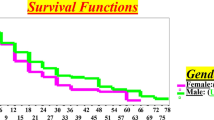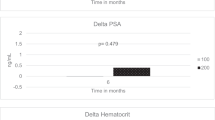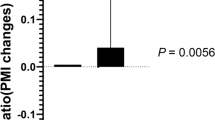Abstract
Low testosterone levels are common in both men and women with human immunodeficiency virus (HIV) infection and may contribute to loss of lean body mass and AIDS wasting. Causes of low testosterone levels are complex and may include chronic illness, HIV infection and its complications, medications used to treat HIV and opportunistic diseases, and normal aging-related declines. In the majority of studies addressing the use of testosterone treatment in HIV-infected patients, testosterone has been found to help prevent loss of lean body and muscle mass. Whether the combination of exercise and testosterone is more effective in preventing loss of lean body mass than either therapy alone is not yet clear and warrants further study. In addition to its effects on body composition, testosterone treatment results in improved mood and libido in HIV-infected women and increased bone mineral density in HIV-infected men. Testosterone may thus make a valuable contribution to the treatment of HIV-infected individuals.
This is a preview of subscription content, access via your institution
Access options
Subscribe to this journal
Receive 8 print issues and online access
$259.00 per year
only $32.38 per issue
Buy this article
- Purchase on Springer Link
- Instant access to full article PDF
Prices may be subject to local taxes which are calculated during checkout



Similar content being viewed by others
References
Dobs AS, Dempsey MA, Ladenson PW, Polk BF . Endocrine disorders in men infected with human immunodeficiency virus. Am J Med 1988; 84: 611–616.
Laudat A et al. Changes in systemic gonadal and adrenal steroids in asymptomatic human immunodeficiency virus-infected men: relationship with the CD4 cell counts. Eur J Endocrinol 1995; 133: 418–424.
Kopicko JJ et al. Characteristics of HIV-infected men with low serum testosterone levels. Int J STD AIDS 1999; 10: 817–820.
Dobs AS et al. Serum hormones in men with human immunodeficiency virus-associated wasting. J Clin Endocrinol Metab 1996; 81: 4108–4112.
Grinspoon S et al. Body composition and endocrine function in women with acquired immunodeficiency syndrome wasting. J Clin Endocrinol Metab 1997; 82: 1332–1337.
Rietschel P et al. Prevalence of hypogonadism among men with weight loss related to human immunodeficiency virus infection who were receiving highly active antiretroviral therapy. Clin Infect Dis 2000; 31: 1240–1244.
Dobs AS . Androgen therapy in AIDS wasting. Baillieres Clin Endocrinol Metab 1998; 12: 379–390.
Wahlstrom JT, Dobs AS . Acute and long-term effects of AIDS and injection drug use on gonadal function. J Acquir Immune Defic Syndr 2000; 25(Suppl 1): S27–S36.
Harman SM et al. Longitudinal effects of aging on serum total and free testosterone levels in healthy men. Baltimore Longitudinal Study of Aging. J Clin Endocrinol Metab 2001; 86: 724–731.
Tenover JL . Male hormone replacement therapy including ‘andropause’. Endocrinol Metab Clin N Am 1998; 27: 969–987.
Wheeler DA et al. Weight loss as a predictor of survival and disease progression in HIV infection. Terry Beirn Community Programs for Clinical Research on AIDS. J Acquir Immune Defic Syndr Hum Retrovirol 1998; 18: 80–85.
Wilson IB et al. Relation of lean body mass to health-related quality of life in persons with HIV. J Acquir Immune Defic Syndr 2000; 24: 137–146.
Lorenz KA et al. Associations of symptoms and health-related quality of life: findings from a national study of persons with HIV infection. Ann Intern Med 2001; 134: 854–860.
Grinspoon S et al. Effects of androgen administration in men with the AIDS wasting syndrome. A randomized, double-blind, placebo-controlled trial. Ann Intern Med 1998; 129: 18–26.
Grinspoon S et al. Sustained anabolic effects of long-term androgen administration in men with AIDS wasting. Clin Infect Dis 1999; 28: 634–636.
Rabkin JG, Wagner GJ, Rabkin R . A double-blind, placebo-controlled trial of testosterone therapy for HIV-positive men with hypogonadal symptoms. Arch Gen Psychiatry 2000; 57: 141–147.
Bhasin S et al. Testosterone replacement and resistance exercise in HIV-infected men with weight loss and low testosterone levels. JAMA 2000; 283: 763–770.
Grinspoon S et al. Effects of testosterone and progressive resistance training in eugonadal men with AIDS wasting. A randomized, controlled trial. Ann Intern Med 2000; 133: 348–355.
Fairfield WP et al. Effects of testosterone and exercise on muscle leanness in eugonadal men with AIDS wasting. J Appl Physiol 2001; 90: 2166–2171.
Dobs AS et al. The use of a transscrotal testosterone delivery system in the treatment of patients with weight loss related to human immunodeficiency virus infection. Am J Med 1999; 107: 126–132.
Kong A, Edmonds P . Testosterone therapy in HIV wasting syndrome: systematic review and meta-analysis. Lancet Infect Dis 2002; 2: 692–699.
Miller K et al. Transdermal testosterone administration in women with acquired immunodeficiency syndrome wasting: a pilot study. J Clin Endocrinol Metab 1998; 83: 2717–2725.
Grinspoon S et al. Effects of hypogonadism and testosterone administration on depression indices in HIV-infected men. J Clin Endocrinol Metab 2000; 85: 60–65.
Wagner GJ, Rabkin JG . Testosterone therapy for clinical symptoms of hypogonadism in eugonadal men with AIDS. Int J STD AIDS 1998; 9: 41–44.
Fairfield WP, Finkelstein JS, Klibanski A, Grinspoon SK . Osteopenia in eugonadal men with acquired immune deficiency syndrome wasting syndrome. J Clin Endocrinol Metab 2001; 86: 2020–2026.
Author information
Authors and Affiliations
Corresponding author
Rights and permissions
About this article
Cite this article
Dobs, A. Role of testosterone in maintaining lean body mass and bone density in HIV-infected patients. Int J Impot Res 15 (Suppl 4), S21–S25 (2003). https://doi.org/10.1038/sj.ijir.3901032
Published:
Issue Date:
DOI: https://doi.org/10.1038/sj.ijir.3901032
Keywords
This article is cited by
-
Undernutrition and HIV Infection in Sub-Saharan Africa: Health Outcomes and Therapeutic Interventions
Current HIV/AIDS Reports (2021)
-
HIV-1 Tat promotes age-related cognitive, anxiety-like, and antinociceptive impairments in female mice that are moderated by aging and endocrine status
GeroScience (2021)
-
Hypogonadism in the HIV-Infected Man
Current Treatment Options in Infectious Diseases (2017)
-
Depression, Testosterone Concentration, Sexual Dysfunction and Methadone Use Among Men with Hypogonadism and HIV Infection
AIDS and Behavior (2012)
-
Adverse Effects of Drugs on Bone and Calcium Metabolism/Physiology
Clinical Reviews in Bone and Mineral Metabolism (2008)



